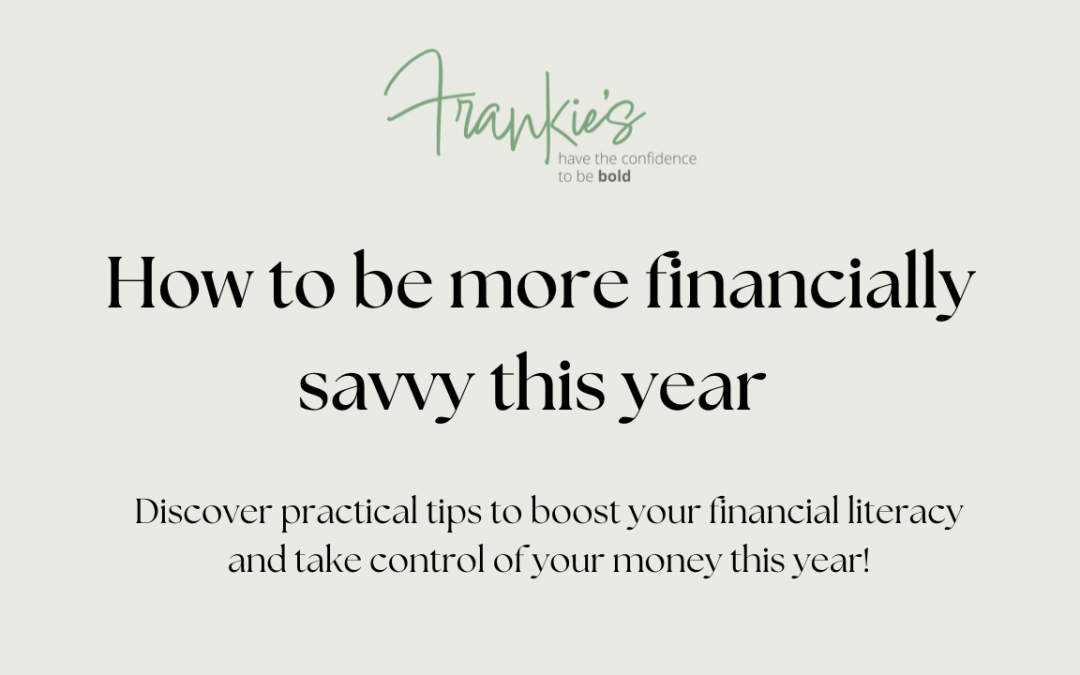“When your money management feels overwhelming and unclear, it can be tempting to shy away from checking your bank or credit card statement,” says Frankie Smith, founder of Frankie’s, “but there’s no better time to get familiar with your finances than at the start of a new year.”
With more than 23M people sharing their financial goals for 2025 on TikTok this January, you can take comfort in knowing you’re not alone. Now certainly is the time for setting intentions and starting new habits.
At Frankie’s, we recognise that it can be hard to know where to start, but developing budgeting strategies, learning how to reduce debt, and understanding investing doesn’t need to be daunting.
To help give you a kickstart, we’ve created a step-by-step guide to improving your financial literacy in 2025.
1. Face your finances:
Spend a couple of hours taking stock of your finances. A task as simple as reading through your monthly bank statements will quickly provide you with an idea of your ingoings and outgoings and may well shine a light on areas of ‘improvement’. Don’t forget that many app-only banks, like Monzo, do the hard work for you, creating easily digestible graphs that break down your spending both monthly and annually.
This is also a good opportunity to dive into your savings. Check in on your pension and consider whether this is something you could contribute more to each month – if you choose to do so and you’re employed, your company may also top up their contributions. And if you’re someone who has changed jobs frequently in the past, it’s worth investigating the possibility of consolidating your various pension pots into one plan through companies such as Pension Bee. This avoids you losing track of them over the years, minimises admin, and could reduce your charges when you come to access it later in life.
2. Question the status quo:
Looking through your recent bank statements will provide you with a realistic picture of your spending habits. “It’s rarely necessary to cut back on all discretionary spending,” says Frankie, “but taking stock might make you realise there are things you pay for regularly that aren’t serving you – whether it’s yet another streaming service or a next day delivery subscription which makes it all too easy to buy clothes you don’t need.” Once you have cut this type of spending either out or down, it’s time to talk budgeting.
The typical budgeting rule is ‘50/30/20’ – 50% on your essential needs (rent/mortgage, bills, food etc), 30% on discretionary spending (a holiday, eating out, a birthday present etc), and the remaining 20% going into your savings, investments or paying off debt. This ratio might shift slightly depending on your personal circumstances, but once you have your budget plan, it’s vital to check in on how it’s going to ensure that what you’ve drawn up is realistic and you’re sticking to it. Aim to do this once a week in the beginning.
With around 50% of your monthly income going towards living expenses it’s also important that you search for the best deals whenever you can. Challenge your energy supplier for a better deal, buy food or home supplies in bulk if it’s cheaper, or consider moving your debt to a lower-interest account. “Getting the basics right might not be fun, but it can save you money every month which can go towards things that bring you more joy – from a nice dinner out, to reducing your debt or seeing your investments start to add up,” says Frankie.
3. Lean into learning
Often the more you learn about something, the more interesting it becomes. And this can certainly be said of money and investing. Whether you prefer listening to podcasts, reading books, or attending events, we’re spoilt for choice when it comes to ways to grow our knowledge.
For those who learn by listening, there are podcasts such as The Which? Money Podcast that covers everything from how to cut your bills to diversifying your investment portfolio, to podcasts that take a more psychological approach to money, such as It’s Not About The Money. Join a club like ours and you’ll have access to monthly events offering interactive, in-person panel discussions that cover everything from how to financially plan for motherhood and raising capital for start-up businesses, to seeking out alternative investment opportunities. Check out Frankie’s upcoming events here.
4. The art of investing
Unsurprisingly, it’s easier to put the hours of research into something you’re genuinely interested in. Do you love handbags and watches? Are you fascinated by green and renewable energy? Or do you closely follow innovations in tech? If so, these could all be areas to consider starting to invest in. As this is something best approached with careful planning, it’s often worth speaking to a wealth manager about your investment plans to gain expert advice. The key here is finding an advisor who aligns with you – at FSWM, for example, we’re particularly focused on advising young professionals and entrepreneurs on everything from cash management, tax and pensions, to specialist advice for start-up businesses. Alternatively, at the very least, try a stock simulator in the first instance as a chance to practise investing risk-free. These simulators reflect the real financial markets, so are a fantastic way to hone your skills before putting any money on the line.
5. Keep it going
Finally, it’s important to not forget that all the above is not a one-time checklist and it’s something you’ll need to continually work on. Schedule in regular check-ins for both your budgeting and investing, keep learning through podcasts and events, and always keep your eyes peeled for fresh opportunities.
The above does not constitute financial advice.

